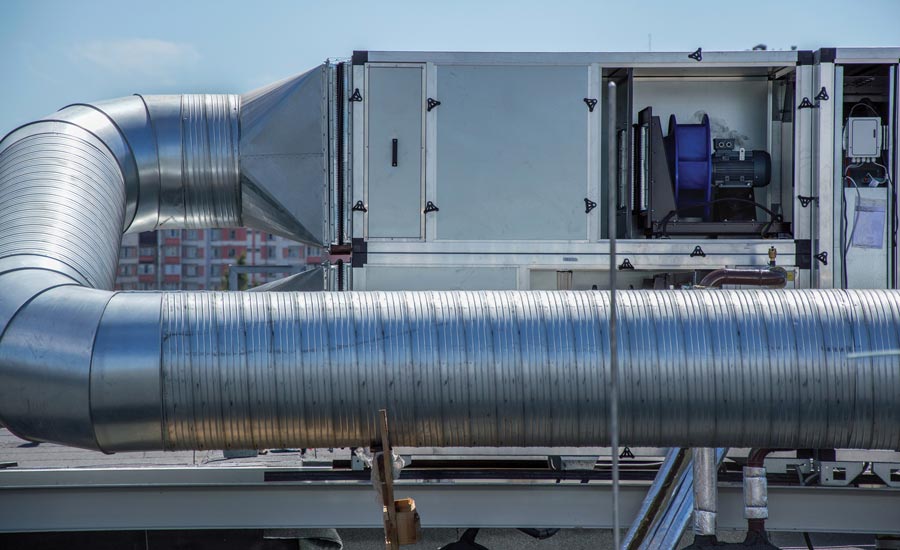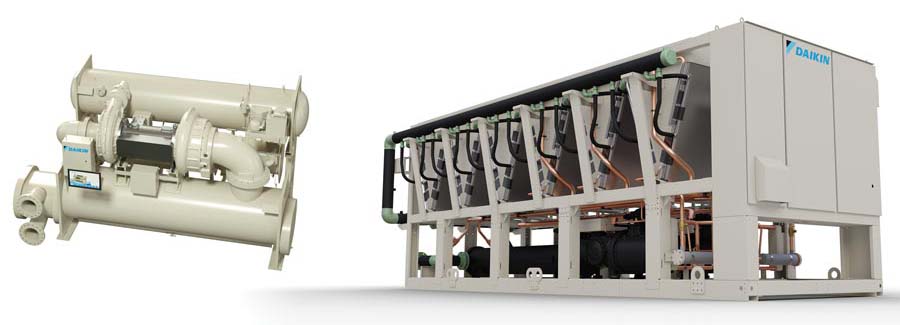The commercial building is evolving to an increased level of intelligence. No longer confined to brick, mortar, and duct systems, the new materials being invested into commercial buildings span the technological gamut from improved sensors to full-on artificial intelligence (AI). The HVAC equipment is being upgraded as well. New products and installation practices are changing how contractors approach their commercial customers. Add to all of this a heightened awareness of personal health, and commercial contractors may find themselves scrambling to meet trending demands.
Safety First
Half-empty office buildings and other commercial structures across the nation have building owners asking the same question: “How do I keep the occupants safe in the midst of COVID-19?” Tired of the question or not, HVAC contractors have an essential role to play in answering it. According to Mark Pipher, vice president and general manager of FacilityConneX, HVAC operation has been one of the areas most heavily impacted by the new normal surrounding COVID-19. Due to this fact, the company has identified three key trends in regard to IAQ and safety — increased fresh air, increased energy usage and maintenance, and a shift in operations to comply with environmental standards in spite of the previous increases.

MORE AIR: The new normal surrounding COVID-19 has many building owners increasing the amount of air they run through their air handling units in an effort to increase the turnover rate in their building.
“Changing requirements are being placed on air handling units [AHUs], and there is a reevaluation of current AHU technologies happening in buildings,” said Pipher. “Commercial buildings must now pull in more outside air than ever before, increasing the amount of air turnover and conditioning needed to maintain a comfortable and safe environment for tenants. Many building owners are questioning whether or not their older AHUs will be able to manage this increased usage.”
To meet this demand, some building owners are implementing dedicated outdoor air systems (DOAS), according to Robert LoForte, president of Veritas Solutions Group.
“DOAS can improve ventilation rates by increasing the amount of fresh air brought into a space, which enhances indoor air quality throughout the building,” he said. “COVID-19 has accelerated the push to improve IAQ.”
With more outside air being processed through an HVAC system, there is more energy usage and a greater frequency of maintenance necessities depending on the system being used.
“The incorporation of more outside air forces buildings to increase energy use for conditioning, either through the additional heating and cooling element or, as many are choosing to do, pushing the air through higher-grade MERV filters,” said Pipher. “Additionally, AHUs and filters are being cleaned more frequently to avoid bacteria, particle, and mold buildup.”
Energy Cost, Compliance
At its core, the definition of a high-performance building tends to lean towards the building’s sustainable use of energy, which is tied to everything from the building envelope to HVAC, to lighting systems, to the indoor environment and air quality, explained LoForte. Increased run times and maintenance can eat into a building owner’s budget. Here is where HVAC contractors can discuss efficiency upgrades via different types of HVAC equipment, or supplemental products that help stave off the energy being consumed to create comfort and safety. According to LoForte, his company is seeing an increased use of energy recovery chiller systems that can produce hot water as a byproduct of producing chilled water.
“This technology reduces energy costs and carbon emissions and can offset some of the increased energy requirements that come with higher levels of outside air ventilation,” he said. “Finally, we’re seeing more buildings introduce heating systems that are all-electric, including air-source heat pump systems, as a way to transition away from natural gas boilers.”
Examining these developing trends, a group of subject matter experts at Daikin Applied weighed in on what they see happening in regard to equipment choice and energy usage in high-performance buildings. Art Rizoli, director of centrifugal products; Rob Landes, product manager, positive displacement chillers; and Francesco Di Giovanni, marketing engineer, positive displacement chillers, agreed that a high performance building takes into account not only energy efficiency but also occupant comfort and IAQ.

EFFICIENT PRODUCTS: Daikin Applied offers the Magnitude Product line (left) and the Pathfinder product line to aid commercial owners. The first is a high efficiency water cooled magnetic bearing chiller and the second is a high efficiency air cooled chiller with VVR technology and integrated water side economizer.
“Buildings are using modern techniques, such as chilled beam systems, to operate their chillers at higher water temperatures that reduce lift and improve energy efficiency,” said the group. “We expect that high-efficiency buildings will use highly efficient HVAC with extended range capabilities that will use less energy than traditional chillers and will also eliminate equipment from the chiller room, resulting in easier/simpler installation to the HVAC contractor.”
They also explained that owners of high-performance buildings, especially those that have cooling load even into the cooler seasons, are starting to purchase equipment that can take advantage of using lower outdoor ambient temperatures to make chillers run in inverted mode (water cooled chiller) or integrated water-side economizer free cooling mode (air cooled chiller).
“Water-cooled chillers that can run with super-low lift, or even inverted, can significantly reduce their power usage compared to chillers that have to maintain an artificially higher condensing pressure,” said the group. “Air-cooled chillers using integrated water-side economizers can similarly drastically reduce their power usage in the cooler ambient conditions by using the cool outdoor air to directly cool the building’s chilled glycol loop through an additional set of heat exchangers.”
They think that the inverted and free cooling modes will become very popular in the next three to five years.
Building Future
As technology and circumstances change, the high-performance building market will change as well. Despite the uncertainty, Pipher thinks that not only will intelligent building solutions become the standard for this market sector, but that commercial buildings across the U.S. will also need to continue adjusting their operations to create comfortable and safe environments for tenants.
“To balance both safety and sustainability, buildings must be conditionally aware and constantly monitoring their operations at all times,” he explained. “Commissioning and retrocommissioning efforts can no longer be spread out once every three to five years to achieve this; they need to take place in real time if a substantial impact on decarbonization is expected. Luckily, the technology is here and is already improving operations in this space.”
LoForte is expecting to see more intelligent air scrubbing technologies deployed to clean the air of carbon dioxide and volatile organic compounds.
“Some advanced air scrubbing technologies are able to reduce the need for outside air up to 80 percent, which can save buildings up to 30 percent in energy costs while reducing HVAC maintenance and pollution,” he said. “We’ll likely see more systems that allow for full integration of all commercial building systems — from HVAC controls to fire alarms, security systems, occupancy monitoring, audiovisual, and more — allowing building managers to visualize their entire facility in one comprehensive dashboard.”



Report Abusive Comment